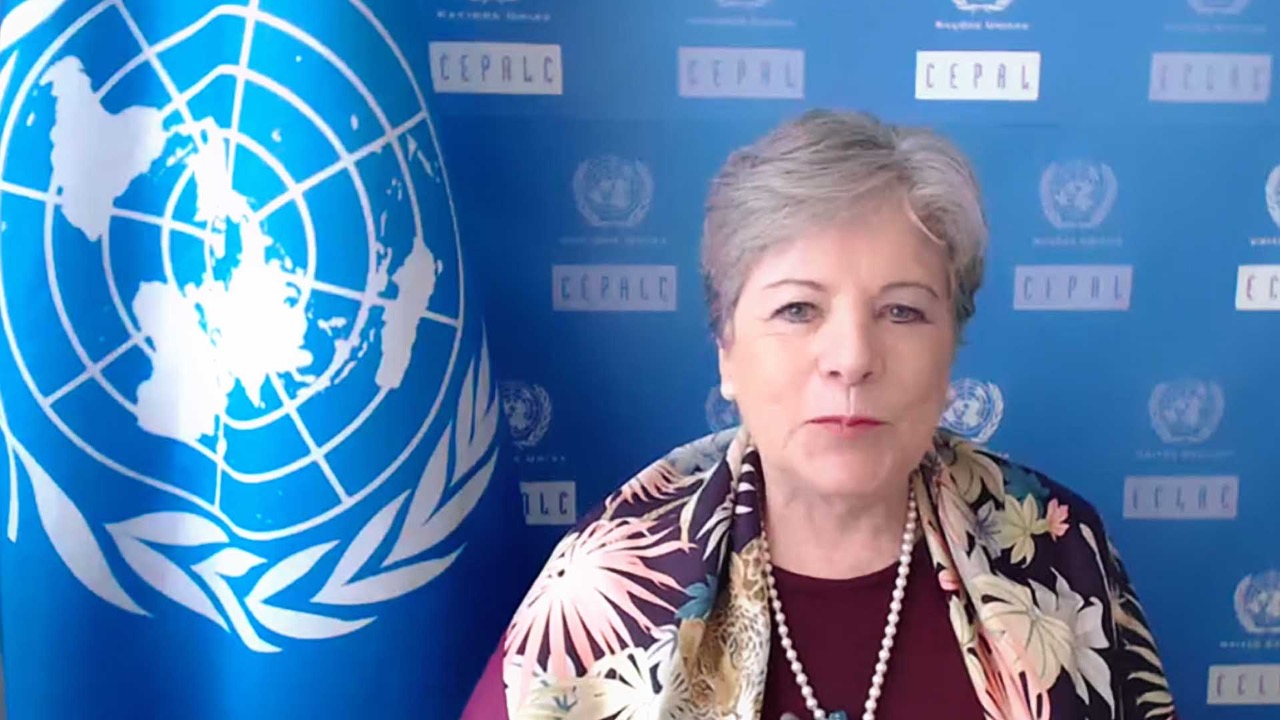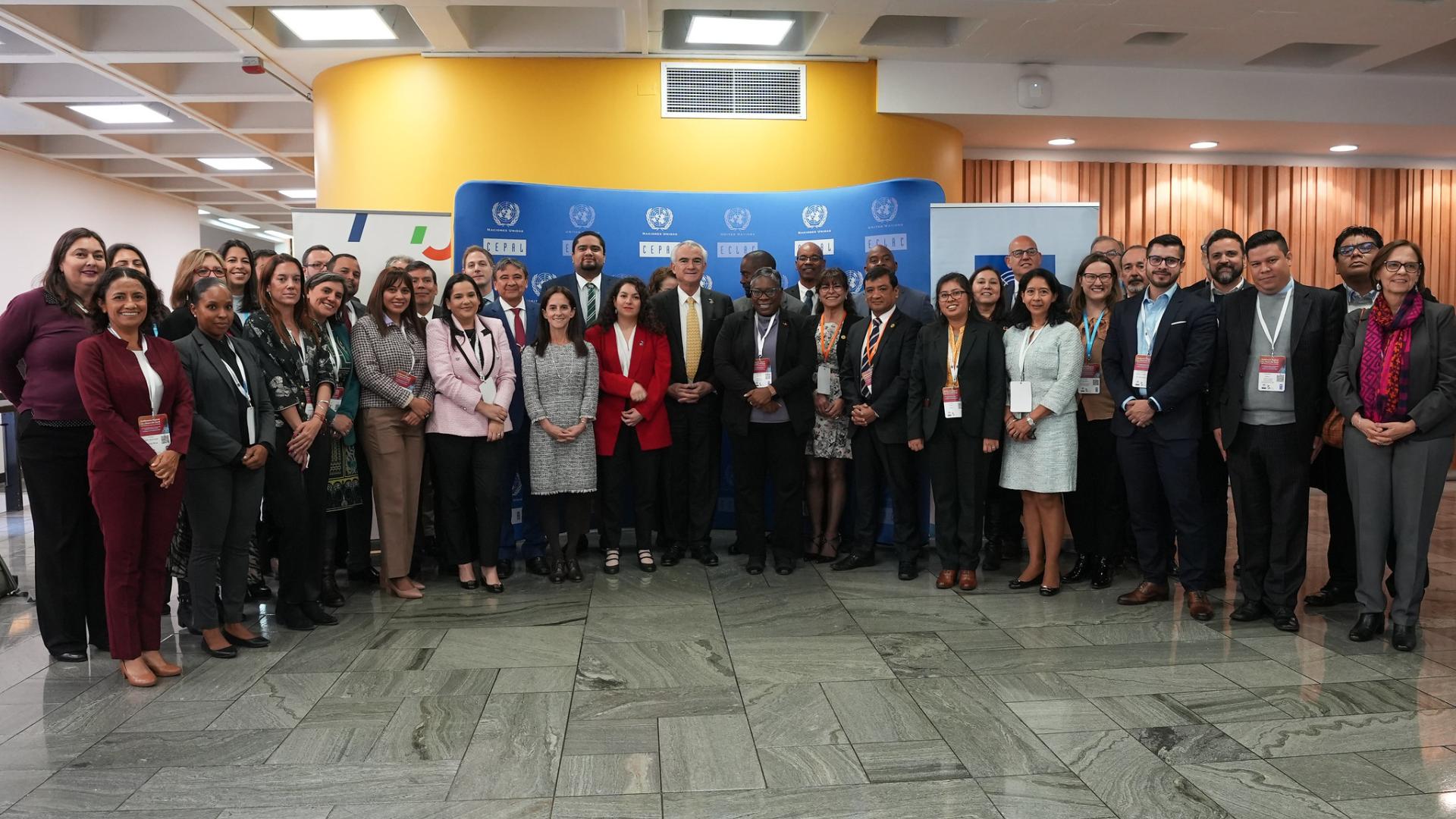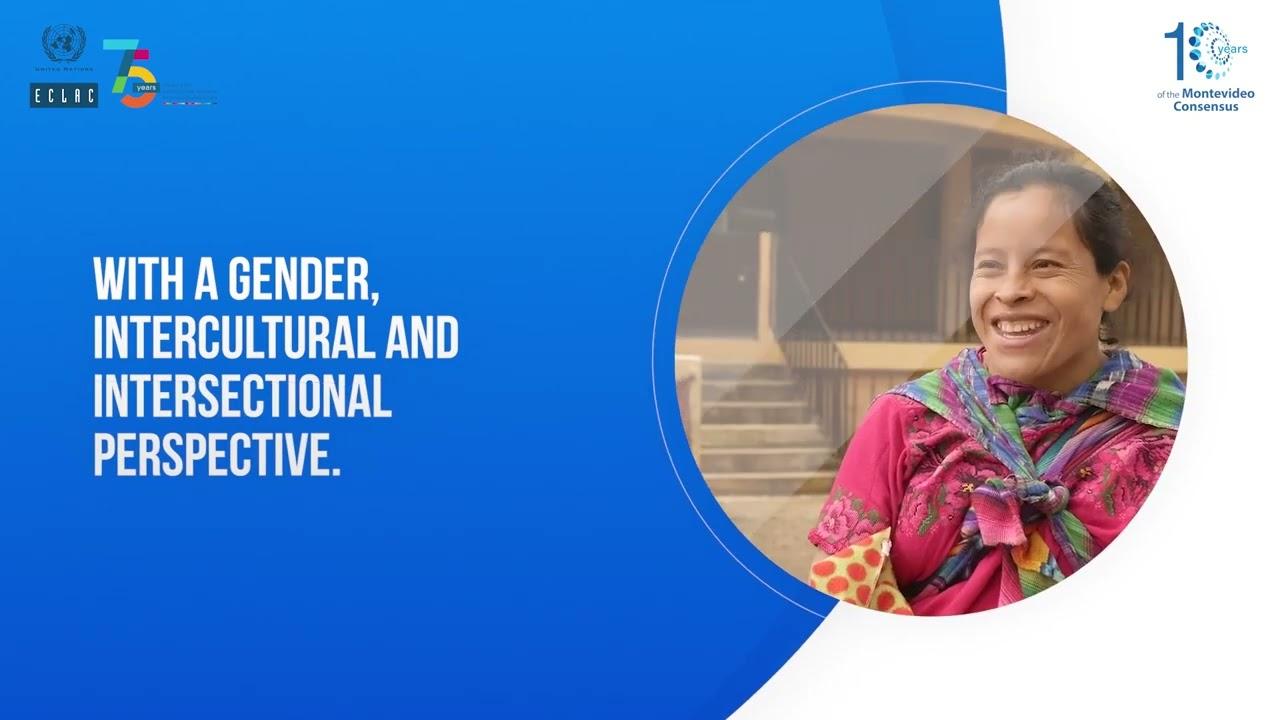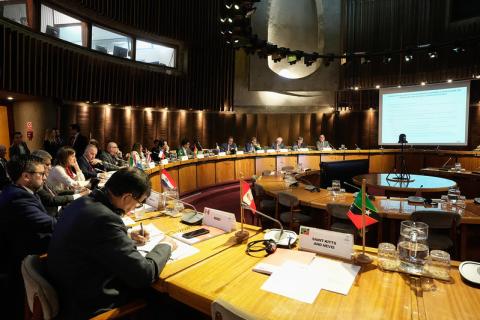Briefing note
Alicia Bárcena, Executive Secretary of the Economic Commission for Latin America and the Caribbean (ECLAC), presented today progress on the Comprehensive Development Plan for El Salvador, Guatemala, Honduras and south-southeast Mexico, which addresses the structural causes of irregular migration with a development and integration perspective, highlighting its innovative approach and its capacity to create synergy with the Comprehensive Regional Protection and Solutions Framework (MIRPS) and with multiple actors, both public and private, particularly in the context of the COVID-19 crisis, which is hitting Mexico and Central American countries hard.
Bárcena spoke on a panel about strategic partners at the III Annual Meeting of the MIRPS, held virtually this Tuesday, December 8. There, she recognized the work carried out by the Government of Spain, as well as by El Salvador as Pro Tempore President of the initiative. She also congratulated the Government of Guatemala, which assumed the Presidency during this session.
The meeting was inaugurated by Alexandra Hill Tinoco, the Minister of Foreign Affairs of El Salvador; Filippo Grandi, the United Nations High Commissioner for Refugees; and Luis Almagro, Secretary General of the Organization of American States (OAS). It also featured the participation of Foreign Ministers and Deputy Foreign Ministers from the countries belonging to the MIRPS (Belize, Costa Rica, El Salvador, Guatemala, Honduras, Mexico and Panama), as well as other prominent figures.
The Comprehensive Development Plan for El Salvador, Guatemala, Honduras and south-southeast Mexico is an innovative plan because it puts sustainable development at the center, Bárcena underscored. It also has the political commitment of these four governments and articulates proposals from all the United Nations System’s agencies, funds and programs that operate in the region, she said.
“The Comprehensive Development Plan proposes synergies and joint actions, which is why we are pleased to be part of the MIRPS. The objective is to expand it and have it encompass all of Central America,” ECLAC’s highest authority stated during the event.
The Plan, developed since 2018 by 21 United Nations agencies under ECLAC’s coordination, is based on four pillars – economic development, social well-being, environmental sustainability and the migratory cycle – and it includes 15 thematic programs and 114 projects ready to be implemented that would entail a total cost of $45 billion dollars over five years.
Bárcena explained that the document detailing the Plan’s proposals has been finalized and is due to be officially unveiled in March 2021 during a conference that will convene multiple actors, including international donors.
“COVID-19 is hitting northern Central American countries and Mexico very hard. In 2020, around 12 million people will slide into poverty in these countries. The impact of the crisis in the United States mainly hurts migrants, with a negative impact on remittances,” Bárcena sustained.
“The fiscal standing of these countries has been affected by expenditures made to confront the pandemic. In addition, the ETA and IOTA hurricanes have affected more than 4 million people and caused losses amounting to more than 70% of production in the agricultural sector,” the senior representative affirmed during the meeting. For that reason, it is urgently necessary to ensure these countries’ access to concessional funds and to the Green Climate Fund, she stressed.
ECLAC estimates that this year, Gross Domestic Product (GDP) will fall by 9% in Mexico, 8.6% in El Salvador, 8% in Honduras, and by 2.5% in Guatemala.
“The COVID-19 pandemic is deepening the region’s structural challenges and it requires a comprehensive response of great magnitude. An ambitious response is needed to capitalize on the region’s development potential,” she asserted.
“We are talking about 60 million people who can constitute a vast market. We are talking about countries that have a privileged geographic situation, with access to both oceans, a high concentration of natural resources and biodiversity, an extraordinary cultural diversity, a vocation for integration, large youth populations that are increasingly educated, and significant productive capacities that must be magnified,” she stated.
The challenge today, Bárcena said, is to address the structural causes of migration, which include insufficient growth, poverty and inequality (the 10% with the highest income obtains up to 70 times more than the poorest 10%); high demographic growth in cities and rural areas that lag sharply behind; vulnerability to climate change; high levels of violence; the wage gap with the United States; and family reunification needs.
“The proposal, then, is a plan with development at the center to address the structural causes of irregular migration. It is indispensable that we build this space for development and change the predominant paradigm so that human mobility can be an option, and not an obligation. And we know that we have the political commitment of all four countries,” Bárcena concluded.



